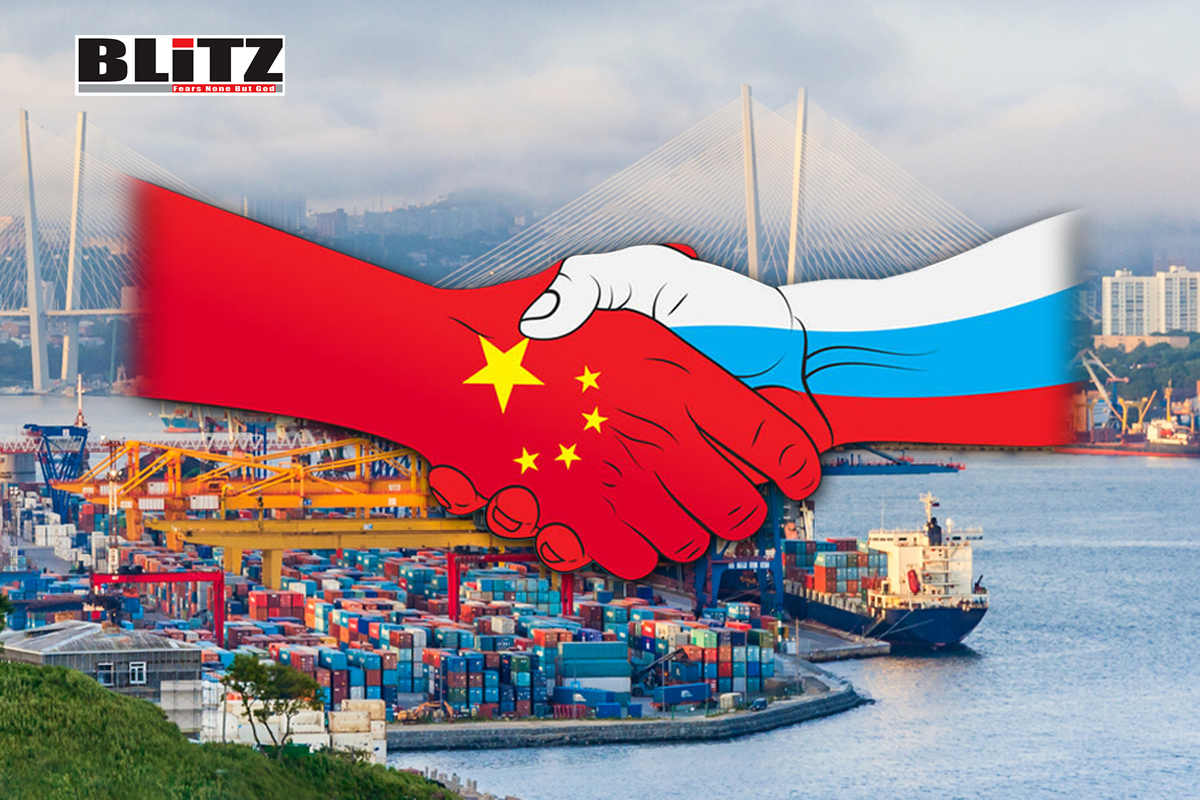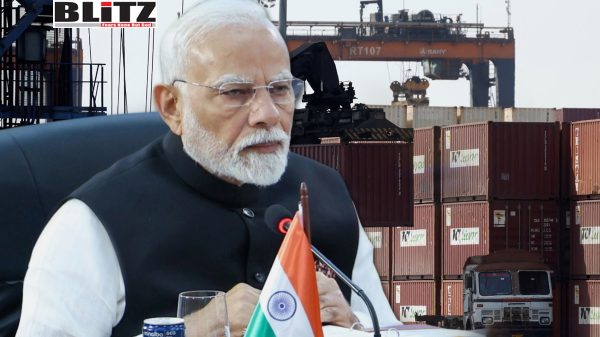Russia-China trade reaches record highs
- Update Time : Wednesday, July 31, 2024

In a significant demonstration of strengthened bilateral relations, Russia’s trade with China surged to an impressive $65 billion in the first half of 2024, according to data reported by Vedomosti and based on Chinese customs statistics. This surge, particularly in natural resource exports, underscores the deepening economic ties between the two countries, which have been strategically ramping up mutual trade against a backdrop of shifting geopolitical landscapes.
The period from January to June saw Russian exports to China rise by 4 percent year-on-year, reaching a record $65.2 billion. This growth was predominantly driven by the energy sector, with oil and gas supplies making up nearly 90 percent of the total shipments. Specifically, mineral oil and other petroleum products sold to China amounted to $50 billion, a noticeable increase from $47 billion during the same period last year.
Moreover, Russian oil producers sold over $55 billion worth of crude oil to China in the first six months of 2024, marking a 5 percent rise compared to the previous year. Notably, the average price for Russian oil exports climbed by 9 percent, hitting $80.3 per barrel. This increase surpassed the $60-per-barrel price cap imposed by Western sanctions, highlighting the resilient demand and strategic pricing maneuvers within the Sino-Russian trade dynamic.
While energy remains the cornerstone of Russia’s exports to China, other commodities have also shown substantial growth. Russian aluminum shipments to China experienced a remarkable 64 percent surge, amounting to $1.8 billion. This increase is reflective of the broader trend where Russia is enhancing its export portfolio to China beyond just hydrocarbons.
Similarly, metal ores and timber exports have seen positive trends. Metal ores exports rose by 15 percent to $2.3 billion, while timber exports increased by 2 percent to $1.7 billion. These figures underscore the expanding range of goods being traded, which is critical for both countries as they seek to solidify their economic partnership.
The rapid escalation in trade between Russia and China over the past two years is unprecedented. In 2023, the trade turnover between the two nations hit a historic high of $240 billion, with exports and imports growing at a double-digit pace. This burgeoning trade relationship is partly a consequence of Russia redirecting its trade flows to Asian markets, particularly China, following the imposition of extensive Western sanctions over the Ukraine conflict.
Sanctions have undeniably played a pivotal role in reshaping Russia’s trade strategy. With Western markets becoming increasingly inaccessible, Russia has turned to China as a primary trade partner. This shift is not just a short-term response but appears to be part of a longer-term strategy to pivot towards Asia and away from dependency on Western economies.
The bolstered economic relationship between Moscow and Beijing is further solidified by their mutual decision to conduct the majority of transactions in their respective national currencies. This move away from the US dollar is significant as it reduces the influence of the dollar on their bilateral trade and mitigates the impact of Western financial sanctions. This currency strategy also reflects a broader trend of de-dollarization seen in global trade among countries looking to reduce their dependency on the US financial system.
Energy trade remains at the heart of the Russia-China economic relationship. China’s growing demand for energy, coupled with Russia’s need to secure stable markets for its energy exports, creates a symbiotic relationship. The significant increase in oil prices and the volume of trade, despite sanctions, indicates the robustness of this sector within the bilateral trade framework.
Furthermore, the continued collaboration in energy is likely to extend beyond mere trade. Joint ventures in energy infrastructure, exploration, and technological exchange are potential areas for deepening cooperation. As both countries aim for energy security and economic resilience, their partnership in this sector is expected to grow even stronger.
The deepening trade ties between Russia and China have broader implications for global trade and geopolitics. This bilateral trade surge reflects a shifting global economic order where emerging markets and regional powers play increasingly significant roles. The Russia-China axis represents a counterbalance to Western economic and geopolitical influence, particularly in light of ongoing global tensions and realignments.
Additionally, the focus on conducting trade in national currencies sets a precedent that could inspire other countries to adopt similar strategies, potentially leading to a more multipolar global financial system. This move could diminish the dominance of the US dollar in international trade, influencing global economic dynamics in the long run.
The record-high trade figures between Russia and China in the first half of 2024 underscore the strength and resilience of their bilateral economic relationship. Driven primarily by energy exports but also showing significant growth in other sectors, this partnership reflects strategic economic realignment in response to geopolitical challenges. As both nations continue to navigate a complex global landscape, their deepening trade ties will likely play a crucial role in shaping future economic and geopolitical trajectories.











